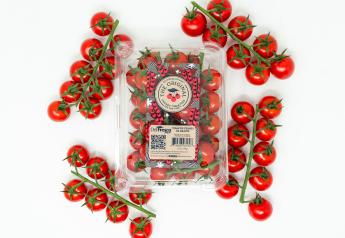The high cost of letting go of a maintenance plan

One of the very first things I learned as a teenage part-time produce clerk was this phrase: “Customers buy with their eyes.”
It was drilled into me. Even if it wasn’t, I would have intuitively known that a neat display is a selling display when it came to fresh produce. I always had a penchant for organization.
Why else is the produce department considered “the theater of the store”? Because it is theatrical. Fresh fruits and vegetables speak to us (not literally. If so, that’s another column). They capture our senses. The aromas and the attractive sight of a well-stacked and fresh display is all a retailer needs to make a customer purchase a product.
It’s almost hypnotizing.
Retailers have increased the size and scope of the produce departments throughout the last 30 years because, single-handedly, produce is the profit center of the entire store. But that’s true only — wait for it — when done right.
That key principle brings me to the point: maintenance.
I am not talking about good-working equipment (also important). I am not referring to clean cases (again, important) or even signage. I am referring to the maintenance of the fresh produce that has been painstakingly selected, prepared and merchandised onto displays and refrigerated cases to capture every customer who walks into the produce department.
The challenge is the in-between, after that product has been filled and the next time it is filled (or refilled). We have come to a time when many retailers, by virtue of tight labor budgets, limited staff or just a lack of knowledge, skill and training — have let there be a big drop in the maintenance of the department conditions. It’s no longer maintained every hour of the day.
High maintenance
But is maintaining overkill?
Absolutely not. Here’s why: Walk into any modern supermarket today between the time of opening and early afternoon. You will generally find the produce department in good, sometimes great, condition. There is ample inventory on the shelf, and it’s presented in an attractive way to suggestive-sell to customers.
Related: Work smarter, not harder — with a purpose
But what’s more common today is the “after” — after the early crew clocks out. That early crew sets up the department for the day. They’re the ones who built the majestic wet wall, made a pyramid of mangoes and lined up bags of salad like a Picasso painting.
That visual pleasure isn’t there anymore for the later-arriving customers, those who still go to the office everyday and need to pick up dinner or just need ideas for dinner. Those shoppers get the leftovers, the picked-over product. The wet wall is drowned, the mango pyramid collapsed and the salad Picasso looks like mud now.
But those are the choices the evening shopper faces. But it doesn’t have to be that way.
Walk through a produce department that has been shopped hard by customers. You’ll see items have fallen down to the bottom of a slanted dry display. A flat table display has loose product rolling around, hands of bananas with broken fingers litter the table, while the fresh cherry display has bags turned upside down and cherries spilling into the empty boxes.
No shopper is going to sort through and buy that product. Worse still, that spilled product likely becomes shrink.
Another way
It would take one clerk just a few minutes to walk the department to do a little maintenance every hour.
We used to call it “fresh first” when a clerk would walk the entire department with a cart and a box to gather loose or damaged product several times a day.
They would simply straighten displays (not filling anything) and make sure the product was well presented and customers did not have to rummage through to find something they liked. A messy display creates more damage because customers believe what they have are the leftovers. Those same leftovers, when neatly presented, take on a fresh and clean look and will ensure a better sell-through.
The three I’s
When maintenance becomes a strategy to improve sell-through, reduce waste and shrink, and increase customer engagement, then maintenance becomes strategy a retailer cannot afford to exclude from an operational plan.
There is not a retailer around that wants poor conditions or a lack of maintenance, but it happens because of a multitude of reasons. Before they realize it, they are losing sales in three ways: impact, impulse and incremental. These “three I’s of merchandising” are the basis for a better maintenance plan.
Related: When did 'Green Onions' ever become nasty?
There are more great merchandisers in produce retail than I can even consider, and each has amazing skills, but it is the maintenance that comes after the aggressive and theatrical merchandising that brings it all home so the department, the store and ultimately the customer all win together.
Is there a magic formula for improved maintenance? No.
Each retailer must develop a program which works best for them. But every retailer should have a built-in maintenance program to ensure that the great work which goes into setting up and presenting fresh produce is not wasted on a lack of maintenance.
Join me and the International Fresh Produce Association for the Global Produce & Floral Show in Anaheim, Calif., Oct. 19-21. Registration is now open and retail supermarkets can receive a complementary registration to the event.
This column is part of a series by Joe Watson, who spent 30-plus years as the director of produce for Rouses Markets and was named Produce Retailer of the Year and honored as one of The Packer 25, both in 2014. Watson now serves as a vice president of retail, foodservice and wholesale for International Fresh Produce Association.







